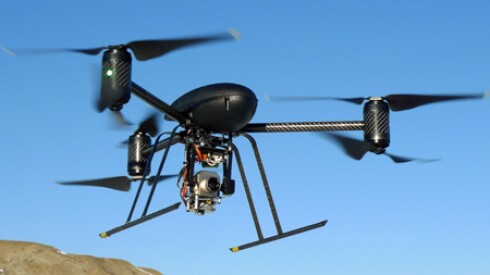Justice and Public Safety
-
Drones and aircraft were key in Minnesota's largest manhunt, helping capture an armed and dangerous man without further violence, reflecting a broader trend of law enforcement's growing reliance on aviation technology.
-
A new State of the 9-1-1 Industry report examines the barriers governments face as they work toward Next-Generation 911, including aging equipment, lack of funding and difficulty coordinating with other agencies.
-
Officials in Grand Traverse County, Mich., are seeking county board approval for an artificial intelligence-powered “call taking system” that would help identify and reroute non-emergency calls to 911.
More Stories
-
The Drone as First Responder program, piloted earlier this year, is now operational in five command areas of the New York City Police Department. The devices are intended to assist police in responding to shots-fired calls, robberies and other crimes.
-
As part of its NG911 efforts, the state can now fix the location of mobile phone calls to within three feet. Emergency calls from landlines also are getting better in a project that could offer lessons for others.
-
Gen Z experiences a significantly higher level of exposure to technology compared with when Generation X or millennials were the same age, and researchers are seeing two points of interest related to crime.
-
The sheriff in the state’s most populous county hopes lawmakers can be persuaded to let authorities deploy traffic cameras to tamp down speeding and running red lights — and reduce fatal and injury crashes.
-
ForceMetrics co-founder and CEO Andre McGregor addresses the need for real-time, actionable insights into critical risks for first responders to make them safer and more effective.
-
The pair has been accused by an Eastern Washington state grand jury of conspiring to smuggle devices to override truck emissions controls into central Washington, and selling them online for $74 million. The men face allegations including smuggling.
-
The supplier of public safety tech wants to help police crack down on the illegal automotive stunts, which have resulted in deaths and injuries. The new tool also provides real-time law enforcement alerts.
-
The City Council is expected to consider a $1.58 million master services agreement for in-car and body-worn cameras for city police, plus other equipment. The newest such cameras are more than three years old.
-
Court access advocates and journalists laud the benefits of allowing the public to remotely view court records, saying it increases transparency and accommodates timely reporting on newsworthy events.
-
As Michigan invests in thermal cameras to reduce bus collisions, a Government Technology analysis reveals the extent to which low light and adverse weather may contribute to these incidents.
-
In an initiative piloted last year and made permanent in June, the New York Police Department uses drones after school to track four aboveground subway lines and alert officers if a person is spotted. Six people have died this year trying to ride on the outside of trains.
-
A new study found that many judges said the tools were flawed, but helpful in some areas, including when they were forced to make quick decisions with scant information.
-
San Jose has launched a mobile camera pilot program as part of the city's ongoing emphasis on using tech to provide a presence or help solve cases as its police department grapples with staffing shortages.
-
The county’s 911 system can now receive pictures, videos and livestreams from callers. Dispatchers will be able to send people a link to send their location, images or a video — or even a livestream.
-
The sheriff’s department continues to promote the app, which actually debuted last year, as “an innovative way for us to connect with residents, businesses and visitors.” Through it, people can report crimes, and the sheriff’s office can send alerts.
-
Recent food recalls have raised concerns among consumers about food safety and regulation, but experts say the issue is complicated due to factors like better use of technology.
-
The Idaho Department of Correction has significantly improved document management processes by utilizing Laserfiche to enable digitization and the automation of administrative tasks. This, in turn, has enhanced communication and facilitated field work.
-
Georgia Power, the state’s largest electric utility, will get a federal grant to pay for the transmission upgrades the company said will let it better withstand extreme weather. The funding is also expected to facilitate integrating renewables, such as solar, and potentially other types of tech.





























